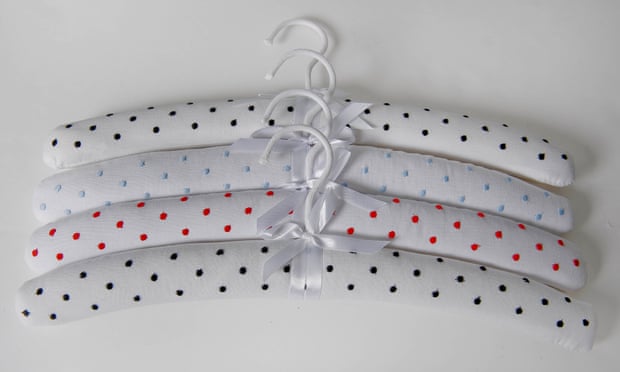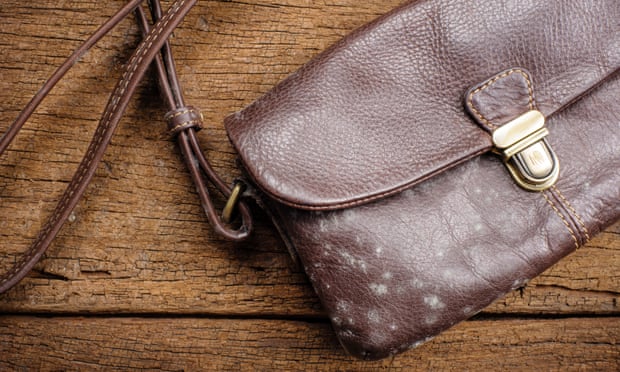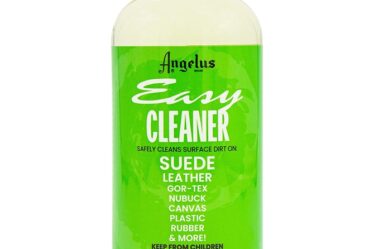
On the weekend, a friend and I stumbled upon a small vintage shop filled with rack upon rack of leather jackets and coats. The shop had the classic, musty smell of vintage from a certain era that, for me, always conjures up memories of playing dress-ups with my sister when we were very small. Tulle tutus, Glomesh handbags and our grandmother’s fur stole were on high rotation.
Thanks to its natural properties, leather is strong, water repellent and repairable, which means it can last for decades. “Leather is one of those materials that is often misunderstood – both easier and trickier to look after than people think,” says designer Christopher Esber. “It is a naturally durable material, but never without its quirks. Look after it and it will look after you.”
Balm and buff
The founders of British bag brand LPOL, Katy and John Maskell-Bell, say to keep your leather garment clean and in the best condition, you should apply a high-quality natural leather balm or cream every few weeks. “This will ensure your item will last for many more years, extending its life so you can enjoy more wear.”
Before you do this, use a damp cloth to clean the surface of the item and leave it for a few minutes to dry. Then, apply the balm using a soft dry cloth and circular motions over all surfaces. Let it soak in for twenty minutes, then using a clean part of the cloth, remove any remaining residue and buff the leather to give it a discreet shine.
Choosing treatments
Since there are many different types of leather, from patent to suede, it’s important to use the right product for your garment. The team behind Farfetch’s repair service, the Restory, recommend applying Carnauba cream to smooth leather, and using a spray for other types of leathers like suede or nubuck.
According to the Maskell-Bells, you can also select a conditioner based on the colour of your leather item. For black leather they suggest a natural black balm; for tan and brown leather they suggest a neutral one. “We also recommend waxing the edges and stitching on your leather garment to keep them resistant to water.”
If you’re not sure, or if the item is particularly precious, Esber says to leave moisturising or replenishing creams to the professionals. Most shoe and handbag repair services will also take care of leather clothes, and you can ask them for advice on home care for the future.
What about washing?
Esber recommends removing superficial stains or dirt with a colourfast, slightly damp cloth and avoiding hard cleaners or detergents. When in doubt, he says, “trust the experts. Look for specialist laundries that handle leather apparel”. According to the Restory, leather should never be machine washed. Instead, wash the exterior of your leather item by hand, using soft detergents to spot clean the garment.
Sign up to receive Guardian Australia’s weekend culture and lifestyle email
If you’ve noticed the lining of your item has started to smell, you can wash it with water and detergent, but you need to be careful not to get the leather wet. To do this, start by turning the garment inside out. Next, the Maskell-Bells recommend you “use a damp cloth with a little pea-sized dot of natural fabric conditioner and lightly scrub in circular motions to remove any dirt, stains or odours”. Finally, leave the garment to dry naturally, ideally outside in the shade, or somewhere well ventilated.
Storage

According to Esber, leather garments should never be stored folded, as this can damage the patina and result in early ageing. Instead, place leather garments on padded coat hangers and keep them in a dry space.
If you live in a particularly humid environment, Esber says, storage is key. “Make sure where it is kept leaves air to circulate. You should also keep it in a place where there is daylight without direct sunlight.” Alternatively, make sure you take your leather out for some air every so often.
Managing mould
Unfortunately, humid environments can cause leather items to develop mould. The Restory says if this happens, “it’s important to isolate the item from the rest of your wardrobe to prevent mould spreading”.
They recommend placing it in a plastic bag and sending it to be professionally cleaned. Before putting the item back in your wardrobe, you need to monitor it for an extended period to ensure the mould doesn’t come back.

If you’d like to try tackling mould removal at home, the Maskell-Bells suggest taking a damp cotton or microfibre cloth and dipping it in a little white vinegar with a few drops of lemon juice. Then swipe this over the surface of the leather to remove the mould, and repeat until you are certain all the remaining spores are gone. Do this outdoors while wearing a protective mask as spores can be a health hazard, then leave the item in direct sunlight to dry.
Help! My leather got wet
If you happen to get caught in the rain while wearing a leather jacket or skirt, the Restory team says, “Don’t panic!” Just hang the item somewhere airy and let it dry slowly and naturally.
“Don’t dry your item on radiators or near artificial heat sources as this risks distorting or warping the shape,” they say. “If it is suede, small rain spots can often be gently buffed away with a soft suede brush.”
For more serious damage, take the item to an expert who can clean, recolour and restore the leather. Once the garment is dry, you may need to reapply a leather conditioner.
Esber says, “Always remember, at its core, leather is a natural product and it will dry naturally if it’s left in the right, dry environment. And after that you’ll often find it’ll be like new!”



